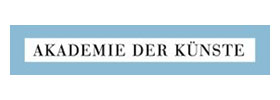
Michael Ruetz »
1968. Die unbequeme Zeit
Exhibition: 17 Apr – 27 Jul 2008
Akademie der Künste am Pariser Platz
Pariser Platz 4
10117 Berlin

Akademie der Künste
Pariser Platz 4
10117 Berlin
+49 (0)30-200571000
Tue-Fri 14-19, Sat/Sun 11-19
The Academy of Arts is dedicating a large exhibition with photography by Michael Ruetz to the decade around 1968. Michael Ruetz influenced the image of '68 as did hardly any other artist. Many of his photographs are a part of our visual memory. However, Ruetz is far more than merely the reporter of this period in time. As a student of Sinology, he grew into the role of the documentary-maker as an active part of a movement. His pictures live from this proximity to the events, from a feeling for situations and the view of people: in the 130 photographs, mainly black and white, the emotionality of the period at the end of the 1960s and the beginning of the 1970s comes to life again. The exhibition not only documents the dynamics of the political movement of '68. It shows the protagonists of this period from Dutschke to Beuys, the bourgeois spiritual climate of West Germany as well as the staged public space of the GDR. But first of all the pictures especially open up one's view onto a world in upheaval and movement, a climate of liberation and emancipation. The photographs from Greece, Rome, Angola and Chile represent this. A wide-ranging book accompanying the exhibition will be issued by Steidl Verlag Göttingen. In cooperation with the Goethe Institute
1968. Die unbequeme Zeit Fotografien von Michael Ruetz Wie kaum ein anderer Künstler hat Michael Ruetz das Bild von '68 geprägt. Viele seiner Bilder sind Teil unseres visuellen Gedächtnisses. Als Student der Sinologie wuchs er als aktiver Teil einer Bewegung in die Rolle des Dokumentaristen. Seine Bilder leben von dieser Nähe zu den Ereignissen, einem Gespür für Situationen und dem Blick auf Menschen: In den 130 vornehmlich schwarz-weißen Fotografien wird die Emotionalität der Zeit Ende der 60er und Anfang der 70er Jahre wieder lebendig. Sie dokumentieren die Dynamik der Zeit, zeigen Protagonisten von Dutschke bis Beuys, das bürgerliche Seelenklima Westdeutschlands ebenso wie den inszenierten öffentlichen Raum der DDR. Vor allem aber öffnen die Bilder den Blick auf eine Welt in Aufbruch und Bewegung. Dafür stehen die Fotografien aus Griechenland, Rom, Angola oder Chile. In Zusammenarbeit mit dem Goethe-Institut